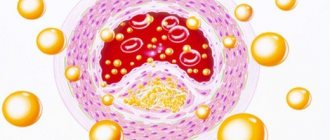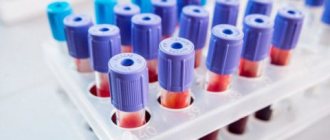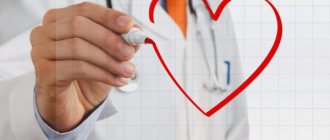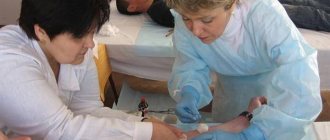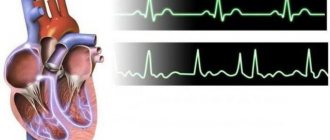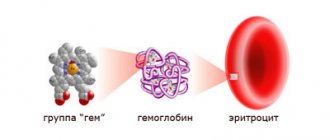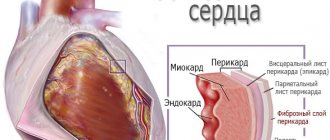Lipid metabolism is the metabolism of fats in the human body, which is a complex physiological process, as well as a chain of biochemical reactions that occur in the cells of the whole body.
There is a neutral category of lipids - cholesterol (CS) and triglycerides (TG), whose molecules do not dissolve in liquid.
In order for cholesterol and triglyceride molecules to move through the bloodstream, they stick to protein molecules, which are transporters in the bloodstream.
With the help of neutral lipids, bile acids and steroid hormones are synthesized, and molecules of neutral lipids fill each cell of the membrane with energy.
By binding to low molecular density proteins, lipids are deposited on the vascular membranes in the form of a lipid stain, followed by the formation of an atherosclerotic plaque.
Lipoprotein composition
Lipoprotein (lipoprotein) consists of a molecule:
- Esterified form of CS;
- Non-esterified form of cholesterol;
- Triglyceride molecules;
- Protein and phospholipid molecules.
Components of proteins (proteids) in the composition of lipoprotein molecules:
- Apoliprotein (apolyprotein);
- Apoprotein (apoprotein).
The entire process of fat metabolism is divided into two types of metabolic processes:
- Endogenous fat metabolism;
- Exogenous lipid metabolism.
If lipid metabolism occurs with cholesterol molecules that enter the body with food, then this is an exogenous metabolic pathway. If the source of lipids is their synthesis by liver cells, then this is an endogenous metabolic pathway.
There are several fractions of lipoproteins, of which each fraction performs certain functions:
- Chylomicron molecules (CM);
- Very low molecular density lipoproteins (VLDL);
- Low molecular density lipoproteins (LDL);
- Medium molecular density lipoproteins (MDL);
- High molecular density lipoproteins (HDL);
- Triglyceride (TG) molecules.
The metabolic process between lipoprotein fractions is interconnected.
Cholesterol and triglyceride molecules are needed:
- For the functioning of the hemostasis system;
- To form the membranes of all cells in the body;
- For the production of hormones by endocrine organs;
- For the production of bile acids.
Cholesterol is involved in many metabolic processes in the human body.
Classification of the disease
In the medical field, there are several varieties of this disease, the first of which divides it depending on the mechanism of development:
- primary or congenital disorder of lipid metabolism - this means that the pathology is not associated with the course of any disease, but is hereditary. The defective gene can be received from one parent, less often from two;
- secondary – lipid metabolism disorders often develop due to endocrine diseases, as well as diseases of the gastrointestinal tract, liver or kidneys;
- nutritional – formed due to the fact that a person eats a large amount of fats of animal origin.
Based on the level of which lipids are elevated, there are the following forms of lipid metabolism disorders:
- pure or isolated hypercholesterolemia – characterized by increased cholesterol levels in the blood;
- mixed or combined hyperlipidemia - in this case, during laboratory diagnostics, an increased content of both cholesterol and triglycerides is detected.
Separately, it is worth highlighting the rarest variety - hypocholesterolemia . Its development is promoted by liver damage.
Modern research methods have made it possible to identify the following types of disease progression:
- hereditary hyperchylomicronemia;
- congenital hypercholesterolemia;
- hereditary dys-beta lipoproteinemia;
- combined hyperlipidemia;
- endogenous hyperlipidemia;
- hereditary hypertriglyceridemia.
Functions of lipoprotein molecules
The structure of the lipoprotein molecule consists of a core, which includes:
- Esterified cholesterol molecules;
- Triglyceride molecules;
- Phospholipids, which cover the core in 2 layers;
- Apoliprotein molecules.
The lipoprotein molecule differs from each other in the percentage of all components.
Lipoproteins differ depending on the presence of components in the molecule:
- To size;
- By density;
- According to its properties.
Indicators of fat metabolism and lipid fractions in the blood plasma:
| lipoprotein | cholesterol content | apoliprotein molecules | molecular density unit of measure grams per milliliter | molecular diameter |
| chylomicron (CM) | TG | Al; | less than 1,950 | 800,0 — 5000,0 |
| · A-l1; | ||||
| · A-IV; | ||||
| · B48; | ||||
| Cl; | ||||
| · C-l1; | ||||
| · C-IIL. | ||||
| residual chylomicron molecule (CM) | TG + ether CS | · B48; | less than 1.0060 | more than 500.0 |
| · E. | ||||
| VLDL | TG | Cl; | less than 1.0060 | 300,0 — 800,0 |
| · C-l1; | ||||
| · C-IIL; | ||||
| · V-100; | ||||
| · E. | ||||
| LPSP | cholesterol ester + TG | Cl; | from 1.0060 to 1.0190 | 250,0 — 3500,0 |
| · C-l1; | ||||
| · C-IIL; | ||||
| · V-100; | ||||
| · E | ||||
| LDL | TG and ether HS | V-100 | from 1.0190 to 1.0630 | 180,0 — 280,0 |
| HDL | TG + cholesterol ester | Al; | from 1.0630 to 1.210 | 50,0 — 120,0 |
| · A-l1; | ||||
| · A-IV; | ||||
| Cl; | ||||
| · C-l1; | ||||
| · S-111. |
Treatment
Currently, there is no targeted treatment effective for most lipid metabolic diseases, but enzyme replacement therapy is effective for patients suffering from type 1 Gaucher disease and type 3 Gaucher disease.
Patients with anemia may require blood transfusions. In some patients, an enlarged spleen must be operated on to improve cardiopulmonary function. Medicines such as gabapentin and carbamazepine may be prescribed to treat pain in patients with Fabry disease. Diet restriction does not prevent the accumulation of lipids in cells and tissues. LABORATORY METHODS FOR RESEARCHING CHILDREN IN THE FIRST 3 YEARS OF LIFE IN A NEUROLOGICAL CLINICmore: GO TO MAIN PAGE
Lipid metabolism disorder
Disorders in lipoprotein metabolism are a disruption in the process of synthesis and breakdown of fats in the human body. These abnormalities in lipid metabolism can occur in any person.
Most often, the cause may be a genetic predisposition of the body to the accumulation of lipids, as well as poor nutrition with a high consumption of cholesterol-containing fatty foods.
An important role is played by pathologies of the endocrine system and pathologies of the digestive tract and intestinal sections.
How are fats used?
The breakdown of fat cells or the process of lipolysis
Triglycerides stored “in reserve” can leave adipocytes and be used for cell needs when they receive insufficient energy or require structural material to build membranes. Hormones of the body that have a lipolytic effect - adrenaline, glucagon, somatotropin, cortisol, thyroid hormones - send a signal to adipocytes - lipolysis or the process of fat breakdown occurs.
Having received “instructions” from hormones, triglycerides are broken down into fatty acids and glycerol. Fatty acids are transported into the blood using carriers called lipoproteins. Lipoproteins in the blood interact with cell receptors, which break down lipoproteins and take fatty acids for further oxidation and use: building membranes or producing energy. Lipolysis can be activated under stress and excessive physical activity.
Causes of disorders in lipid metabolism
This pathology quite often develops as a consequence of pathological disorders in the body systems, but there is a hereditary etiology of cholesterol accumulation in the body:
- Hereditary genetic chylomicronemia;
- Congenital genetic hypercholesterolemia;
- Hereditary genetic dys-beta-lipoproteinemia;
- Combined type of hyperlipidemia;
- Endogenous hyperlipidemia;
- Hereditary genetic hypertriglycerinemia.
Also, disorders in lipid metabolism can be:
- The primary etiology, which is represented by hereditary congenital hypercholesterolemia, due to a defective gene in the child. A child may receive the abnormal gene from one parent (homozygous pathology), or from both parents (heterozygous hyperlipidemia);
- Secondary etiology of disorders in fat metabolism is caused by disturbances in the endocrine system, improper functioning of liver and kidney cells;
- Nutritional reasons for the imbalance between cholesterol fractions come from poor nutrition for patients, when cholesterol-containing products of animal origin predominate on the menu.
Poor nutrition
Secondary causes of disorders in lipid metabolism
Secondary hypercholesterolemia develops due to existing pathologies in the patient’s body:
- Systemic atherosclerosis. This pathology can develop on the basis of primary hypercholesterolemia, as well as from poor nutrition, with a predominance of animal fats;
- Addictions: nicotine and alcohol addiction. Chronic consumption affects the functionality of liver cells, which synthesize 50.0% of the total cholesterol contained in the body, and chronic nicotine addiction leads to weakening of the arterial membranes, on which cholesterol plaques can be deposited;
- Lipid metabolism is also impaired in diabetes mellitus;
- In the chronic stage of liver cell failure;
- With pathology of the pancreas - pancreatitis;
- With hyperthyroidism;
- Diseases associated with impaired functionality of endocrine organs;
- When Whipple syndrome develops in the body;
- With radiation sickness and malignant oncological neoplasms in organs;
- Development of biliary type of cirrhosis of liver cells in stage 1;
- Deviations in the functionality of the thyroid gland;
- Pathology hypothyroidism, or hyperthyroidism;
- The use of many medications as self-medication, which leads not only to lipid metabolism disorders, but can also trigger irreparable processes in the body.
Fat metabolism scheme
Factors that provoke disorders in lipid metabolism
Risk factors for disorders in fat metabolism include:
- Human gender. Men are more susceptible to fat metabolism disorders. The female body is protected from the accumulation of lipids by sex hormones during reproductive age. With the onset of menopause, women are also prone to hyperlipidemia and the development of systemic atherosclerosis and pathologies of the cardiac organ;
- Patient's age. Men - after 40 - 45 years, women after 50 years of age at the time of the development of menopause and menopause;
- Pregnancy in a woman, an increase in the cholesterol index is due to natural biological processes in the female body;
- Physical inactivity;
- Unhealthy diet, in which the maximum amount of cholesterol-containing foods in the menu;
- High blood pressure index - hypertension;
- Excess body weight - obesity;
- Cushing's pathology;
- Kidney and liver diseases;
- Heredity.
Kidney and liver diseases
Medications that lead to pathological changes in lipid metabolism
Many medications provoke the occurrence of the pathology dyslipidemia. The development of this pathology can be aggravated by self-medication, when the patient does not know the exact effects of medications on the body and the interaction of drugs with each other.
Improper use and dosage lead to an increase in cholesterol molecules in the blood.
Table of medications that affect the concentration of lipoproteins in the blood plasma:
| name of the drug or pharmacological group of drugs | increase in LDL index | increase in triglyceride index | decrease in HDL index |
| thiazide-type diuretics | + | ||
| drug Cyclosporine | + | ||
| medication Amiodarone | + | ||
| The drug Rosiglitazone | + | ||
| bile sequestrants | + | ||
| group of drugs inhibiting proteinase | + | ||
| retinoid medications | + | ||
| group of glucocorticoids | + | ||
| group of anabolic steroid medications | + | ||
| drug Sirolimus | + | ||
| beta blockers | + | + | |
| progestin group | + | ||
| androgen group | + |
When using hormone replacement therapy, the hormone estrogen and the hormone progesterone, which are part of medications, reduce HDL molecules in the blood.
Oral contraceptive medications also reduce high molecular weight cholesterol in the blood.
Other drugs with long-term therapy lead to changes in lipid metabolism and can also disrupt the functionality of liver cells.
Consequences of high blood lipids
Vascular atherosclerosis
Excessively “fatty” blood is enemy number 1 for the body. Excessive amounts of lipid fractions, as well as defects in their utilization, inevitably lead to the fact that “all the excess” settles on the vascular wall with the formation of atherosclerotic plaques. Metabolic lipid disorders lead to the development of atherosclerosis, which means that in such patients the risk of developing coronary heart disease, stroke, and heart rhythm disturbances increases many times.
Signs of changes in lipid metabolism
Symptoms of the development of hypercholesterolemia of primary etiology (genetic) and secondary etiology (acquired) cause a large number of changes in the patient’s body.
Many symptoms can only be identified through diagnostic testing using instrumental and laboratory techniques, but there are also symptoms that can be detected visually and using the palpation method:
- Xanthomas form on the patient’s body;
- Formation of xanthelasmas on the eyelids and on the skin;
- Xanthomas on tendons and joints;
- The appearance of cholesterol deposits in the corners of the eye incisions;
- Body weight increases;
- There is an enlargement of the spleen, as well as the liver organ;
- Symptoms of atherosclerosis appear;
- Clear signs of the development of nephrosis are diagnosed;
- Generalized symptoms of endocrine system pathology are formed.
This symptomatology indicates a violation of lipid metabolism and an increase in the cholesterol index in the blood.
When there is a change in lipid metabolism towards a decrease in lipids in the blood plasma, the following symptoms are pronounced:
- Body weight and volume decrease, which can lead to complete exhaustion of the body - anorexia;
- Hair loss from the scalp;
- Separation and brittleness of nails;
- Eczema and ulcers on the skin;
- Inflammatory processes on the skin;
- Dry skin and exfoliation of the epidermis;
- Pathology nephrosis;
- Disorders of the menstrual cycle in women;
- Female infertility.
Symptoms of atherosclerosis appear.
Symptoms of changes in lipid metabolism are the same in a child’s body and in an adult’s body.
Children more often show external signs of an increase in the cholesterol index in the blood, or a decrease in lipid concentrations, and in an adult body, external signs appear when the pathology progresses.
Possible complications
Disorders of lipid metabolism can lead to a number of unpleasant symptoms, severe weight loss, and worsening of chronic diseases. In addition, this pathology in metabolic syndrome can cause the development of the following diseases and conditions:
- atherosclerosis, which affects the blood vessels of the heart, kidneys, brain, heart;
- narrowing of the lumen of blood arteries;
- formation of blood clots and emboli;
- the occurrence of an aneurysm (vascular dissection) or rupture of arteries.
Diagnostics
To establish the correct diagnosis, the doctor must examine the patient and also refer the patient for laboratory diagnostics of blood composition. Only in the aggregate of all the research results can an accurate diagnosis of changes in lipid metabolism be made.
The primary diagnostic method is carried out by the doctor at the patient’s first appointment:
- Visual examination of the patient;
- Studying the pathology of not only the patient himself, but also genetic relatives to identify familial hereditary hypercholesterolemia;
- Anamnesis collection. Particular attention is paid to the patient’s nutrition, as well as lifestyle and addictions;
- The use of palpation of the anterior wall of the peritoneum, which will help identify the pathology of hepatosplenomegaly;
- The doctor measures the blood pressure index;
- A complete survey of the patient about the onset of the development of pathology in order to be able to establish the onset of changes in lipid metabolism.
Laboratory diagnosis of disorders in lipid metabolism is carried out using the following method:
- General analysis of blood composition;
- Biochemistry of plasma blood composition;
- General urine analysis;
- Laboratory blood test using lipid spectrum method - lipogram;
- Immunological analysis of blood composition;
- Blood to identify the index of hormones in the body;
- Study of genetic detection of defective and abnormal genes.
Methods of instrumental diagnostics for disorders of fat metabolism:
- Ultrasound (ultrasound examination) of liver and kidney cells;
- CT (computed tomography) of internal organs that are involved in lipid metabolism;
- MRI (magnetic resonance imaging) of internal organs and the blood flow system.
MRI of internal organs
Carrying out a massage
Massage for lipid metabolism disorders is quite effective. It helps reduce body fat and stimulates blood circulation. It is recommended to conduct the session in the morning after breakfast or after lunch. If the abdominal muscles are weakened, striking techniques cannot be performed.
If the patient's condition worsens during the session, the procedure should be stopped. The intensity of massage movements is increased gradually. It is recommended to massage 1-2 times a week. A short rest is required before and after the procedure.
The effect increases when performing a massage in a steam room or bathhouse. However, you must first consult a doctor. During treatment, it is recommended to follow a special diet. In case of severe obesity, when a person cannot lie on his stomach and suffers from shortness of breath, he should lie on his back, and a cushion is placed under his head and knees.
Initially, massage the lower extremities. After this, the techniques of rubbing, stroking, and vibration are used. They alternate with kneading.
How to restore and improve cholesterol metabolism?
Correcting fat metabolism disorders begins with a review of lifestyle and nutrition.
The first step after making a diagnosis is to immediately:
- Give up existing bad habits;
- Increase physical activity on the body;
- Increase your activity, you can start riding a bike, or go to the pool. A 20-30 minute session on an exercise bike is also suitable, but cycling in the fresh air is preferable;
- Constant control of body weight and the fight against obesity;
- Diet food.
A diet for liposynthesis disorders can:
- Restore lipid and carbohydrate metabolism in the patient;
- Improve the functioning of the heart organ;
- Restore blood microcirculation in the cerebral vessels;
- Normalization of metabolism of the whole body;
- Reduce bad cholesterol levels to 20.0%;
- Prevent the formation of cholesterol plaques in the main arteries.
Increase physical activity on the body
Restoring lipid metabolism with nutrition
Dietary nutrition for disorders of the metabolism of lipids and lipid-like compounds in the blood is initially the prevention of the development of atherosclerosis and diseases of the heart organ.
Diet not only acts as an independent part of non-drug therapy, but also as a component of a complex of drug treatment with drugs.
The principle of proper nutrition to normalize fat metabolism:
- Limit consumption of cholesterol-containing foods. Eliminate from the diet foods containing animal fat - red meats, fatty dairy products, eggs;
- Meals in small portions, but not less than 5 - 6 times a day;
- Introduce fiber-rich foods into your daily diet - fresh fruits and berries, fresh and boiled and stewed vegetables, as well as cereals and legumes. Fresh vegetables and fruits will fill the body with a whole complex of vitamins;
- Eat sea fish up to 4 times a week;
- Use vegetable oils that contain Omega-3 polyunsaturated fatty acids - olive, sesame and flaxseed oil - in cooking daily;
- Eat only lean meats, and cook and eat poultry without skin;
- Fermented milk products must have 0% fat content;
- Introduce nuts and seeds into your daily menu;
- Increased drinking. Drink at least 2000.0 milliliters of clean water per day.
Drink at least 2 liters of clean water
Drug treatment
Correcting impaired lipid metabolism with the help of medications gives the best result in normalizing the total cholesterol index in the blood, as well as restoring the balance of lipoprotein fractions.
Drugs used to restore lipoprotein metabolism:
| group of drugs | LDL molecules | triglyceride molecules | HDL molecules | therapeutic effect |
| statin group | decrease 20.0% - 55.0% | decrease 15.0% - 35.0% | increase 3.0% - 15.0% | shows a good therapeutic effect in the treatment of atherosclerosis, as well as in the primary and secondary prevention of the development of cerebral stroke and myocardial infarction. |
| fibrate group | decrease 5.0% - 20.0% | decrease 20.0% - 50.0% | increase 5.0% - 20.0% | enhancing the transport properties of HDL molecules to deliver cholesterol back to liver cells for its utilization. Fibrates have anti-inflammatory properties. |
| bile sequestrants | decrease 10.0% - 25.0% | decrease 1.0% - 10.0% | increase 3.0% - 5.0% | good medicinal effect with a significant increase in triglycerides in the blood. There are disadvantages in the tolerability of the drug by the digestive tract. |
| drug Niacin | decrease 15.0% - 25.0% | decrease 20.0% - 50.0% | increase 15.0% 35.0% | the most effective drug for increasing the HDL index, and also effectively reduces the lipoprotein A index. |
| The drug has proven itself in the prevention and treatment of atherosclerosis with positive dynamics of therapy. | ||||
| drug Ezetimibe | decrease 15.0% - 20.0% | decrease 1.0% - 10.0% | increase 1.0% - 5.0% | has a therapeutic effect when used with drugs of the statin group. The drug prevents the absorption of lipid molecules from the intestines. |
| fish oil - Omega-3 | increase 3.0% - 5.0; | decrease 30.0% - 40.0% | no changes appear | These drugs are used in the treatment of hypertriglyceridemia and hypercholesterolemia. |
Drug treatment
Using folk remedies
Lipid metabolism disorders can be treated with medicinal plants and herbs only after consultation with your doctor.
Effective plants in restoring lipoprotein metabolism:
- Plantain leaves and roots;
- Immortelle flowers;
- Horsetail leaves;
- Chamomile and calendula inflorescences;
- Leaves of knotweed and St. John's wort;
- Hawthorn leaves and fruits;
- Leaves and fruits of strawberries and viburnum plants;
- Dandelion roots and leaves.
Traditional medicine recipes:
- Take 5 spoons of strawberry flowers and steam with 1000.0 milliliters of boiling water. Leave for 2 hours. Take 3 times a day, 70.0 - 100.0 milligrams. This infusion restores the functioning of liver and pancreas cells;
- Every morning and every evening, take 1 teaspoon of crushed flax seeds. You need to drink 100.0 - 150.0 milliliters of water or skim milk;
- Plantain leaf juice - 1 teaspoon twice a day.
Proper nutrition
If lipid metabolism is disrupted, you must follow a special diet. You need to eat often. The interval between meals is 2-3 hours. If the interval is longer, the body will begin to store fat. Only light food will help normalize metabolism.
Fish must be present in the diet, as it contains Omega-3 fatty acids. They promote the production of enzymes that help break down fats and prevent their accumulation. You need to drink as much clean water as possible. It is recommended to do this 30 minutes before meals and an hour after it. You need to exclude unhealthy fats, flour, and unhealthy foods from your diet.
Prevention
To prevent pathological changes in lipid metabolism, it is necessary to adhere to the following preventive measures:
- A healthy lifestyle and giving up bad habits - alcohol and smoking;
- Constant struggle with extra pounds, avoid obesity;
- Proper dietary nutrition with a minimum amount of animal fat. A balanced diet allows you to fight high cholesterol and also helps you lose extra pounds;
- Eliminate stressful situations and emotional overload of the nervous system;
- Constantly adjust the blood pressure index in case of hypertension, as well as constantly reduce the high glucose index in diabetes mellitus;
- Undergo preventive examinations with a general practitioner, cardiologist and endocrinologist.
Preventive measures and outcome
To avoid the development of dyslipidemia, you must follow simple recommendations from specialists:
- Lead a healthy lifestyle,
- Be a physically active person
- Eat properly,
- Maintain normal body weight
- Avoid stress and psycho-emotional stress,
- Monitor blood pressure and blood glucose levels,
- Treat existing diseases in a timely manner,
- Have regular medical examinations.
The prognosis of the pathology is favorable. Properly prescribed therapy, a balanced diet and a positive attitude towards life will help normalize fat metabolism, prevent the formation of atherosclerotic plaques and prevent the development of life-threatening complications - heart attack and stroke. After a series of diagnostic and therapeutic measures, patients should adhere to individual preventive programs throughout their lives. Individuals at risk need to periodically monitor lipid metabolism. It is much easier to correct initial pathological changes than to undergo long and persistent treatment later.
